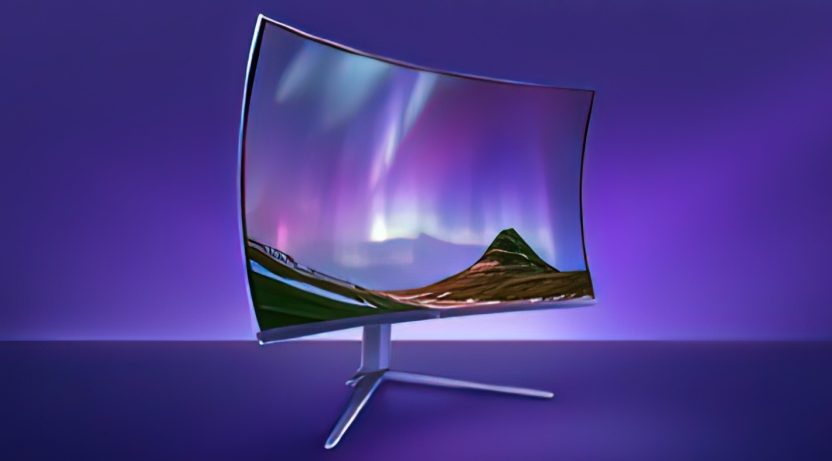TCL has announced a slew of monitors due in 2024 with numerous hot new technologies at a display tech conference in China. Arguably the biggest news is its inkjet printed OLED technology, which provides a much-needed alternative to the dominant LG and Samsung OLED panels used in every gaming monitor thus far.
TCL is showing off its inkjet OLED tech in two monitors, a 31-inch 4K 120Hz model with a weird convex panel and then a more conventional 65-inch curved monitor with full 8K resolution and 120Hz refresh.
The convex model feels like a bit of a gimmick, but supposedly allows for glasses-free spatial 3D visuals of some kind. Honestly, we’re more interested in the fact that it’s a 31-inch 4K high refresh OLED that isn’t based on Samsung or LG panel tech.
As for the 65-inch monitor, the 8K resolution means you’re getting very nearly the same pixel density as the “standard” 32-inch 4K monitor form factor. That makes a really large display much more viable for PC usage.
Of course, so many pixels also makes for huge bandwidth demands. In short, you’re gonna need a new GPU. Right now, only AMD’s Radeon RX 7000 family of GPUs support the DisplayPort 2.0 interface you need to drive 8K at 120Hz. Even Nvidia’s monstrous RTX 4090 can’t do that.
(Image credit: TCL)
(Image credit: TCL)
(Image credit: TCL)
Still, this display isn’t due out until next year. So, it could be well timed for Nvidia’s next-gen GPUs which will likely have DP 2.0 support.
But perhaps the most important aspect here is TCL’s new inkjet printed OLED panel tech rather than any specific panel size or shapt. TCL has apparently spent $6.8 billion on a new inkjet OLED factory. Originally, production was slated for 2023, but that’s been pushed back to next year.
The simple fact of having an alternative to existing LG and Samsung OLED tech is interesting enough. How the TCL panels compare for full-screen brightness will be particularly intriguing. For now there’s little information at all on the panel tech’s brightness.
(Image credit: Future)
Best OLED gaming monitor: So much contrast
Best gaming monitor: Pixel-perfect panels for your PC
Best high refresh rate monitor: Screaming quick screens
Best 4K monitor for gaming: When only high-res will do
Best 4K TV for gaming: Big-screen 4K PC gaming
Then there’s cost. The whole point of inkjet printed OLED panel tech is to be dramatically cheaper than the FMM or Fine Metal Mask process used by what you might call conventional OLED panels. Inkjet tech should also make it easier to hit the higher pixel densities of PC monitors compared to HDTVs.
One final note involves a non-OLED monitor from TCL. It’s a 57-inch dual-4K monster that seems very similar to the Samsung Odyssey Neo G9 G95NC. However, it boasts no fewer than 11,000 dimming zones in its mini-LED backlight, and therefore far more than the 2,392 of the Samsung monitor.
Pricing and specific launch dates for any of these monitors have not been released. But we’re hoping all of them will roll out at some point in 2024.











